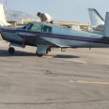-
Posts
193 -
Joined
-
Last visited
The recent visitors block is disabled and is not being shown to other users.

65MooneyPilot replied to Jpravi8tor's topic in Vintage Mooneys (pre-J models)

65MooneyPilot replied to donkaye, MCFI's topic in Avionics/Panel Discussion

65MooneyPilot replied to rbmaze's topic in Vintage Mooneys (pre-J models)

65MooneyPilot replied to rbmaze's topic in Vintage Mooneys (pre-J models)

65MooneyPilot replied to Mister_Bevilaqua's topic in Vintage Mooneys (pre-J models)

65MooneyPilot replied to Mister_Bevilaqua's topic in Vintage Mooneys (pre-J models)

65MooneyPilot replied to Mister_Bevilaqua's topic in Vintage Mooneys (pre-J models)

65MooneyPilot replied to Mister_Bevilaqua's topic in Vintage Mooneys (pre-J models)

65MooneyPilot replied to Mister_Bevilaqua's topic in Vintage Mooneys (pre-J models)
We have placed cookies on your device to help make this website better. You can adjust your cookie settings, otherwise we'll assume you're okay to continue.